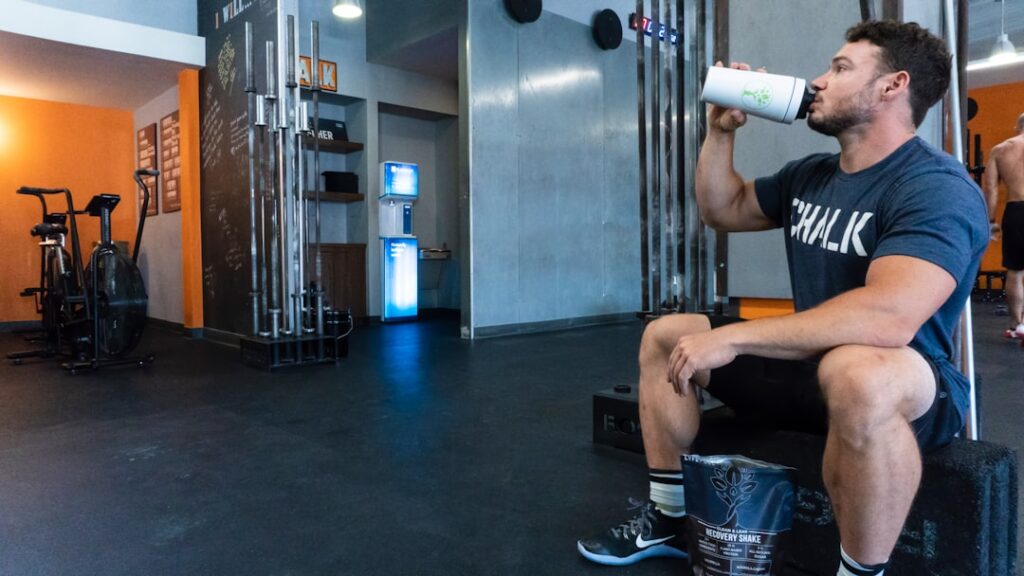The criminal justice system plays a crucial role in maintaining law and order in society. It encompasses various components, including law enforcement, courts, and corrections. While punishment has traditionally been the primary focus of the criminal justice system, there is growing recognition of the importance of rehabilitation in reducing recidivism and promoting public safety.
Rehabilitation refers to the process of helping individuals who have committed crimes to reintegrate into society and lead productive lives. It involves addressing the underlying causes of criminal behavior, such as substance abuse, mental health issues, and lack of education or job skills. By providing inmates with the necessary tools and support to change their behavior, rehabilitation aims to reduce the likelihood of reoffending and create safer communities.
Key Takeaways
- Rehabilitation is crucial in the criminal justice system to help inmates rebuild their lives and become productive members of society.
- Gage County inmates faced challenges during reentry but were able to overcome them and transform their lives through rehabilitation programs.
- Personal stories of redemption from Gage County inmates show the power of rehabilitation in changing lives.
- Education and job training played a significant role in the success of Gage County inmates’ rehabilitation.
- Restorative justice and mental health and addiction treatment are also important components of rehabilitation for inmates.
The History of Gage County Inmates: From Incarceration to Rehabilitation
The Gage County Correctional Facility, located in Nebraska, has a long history dating back to its establishment in the early 1900s. Like many correctional facilities at the time, it primarily focused on punishment rather than rehabilitation. Inmates were subjected to harsh conditions and limited opportunities for personal growth or development.
Over time, however, there has been a shift in the approach taken by Gage County towards inmate rehabilitation. Recognizing that simply incarcerating individuals without addressing the root causes of their criminal behavior is ineffective, the facility has evolved to prioritize rehabilitation as an integral part of its mission.
The Challenges of Reentry: How Gage County Inmates Overcame Obstacles and Rebuilt Their Lives
One of the biggest challenges faced by inmates upon release is reentry into society. After spending months or even years behind bars, they often struggle to find employment, secure stable housing, and rebuild relationships with family and friends. These challenges can increase the risk of recidivism if not properly addressed.
To support successful reentry, Gage County offers a range of programs and resources to help inmates overcome these obstacles. These include job training and placement services, educational programs, counseling, and assistance with finding housing. By providing inmates with the necessary tools and support, Gage County aims to increase their chances of successfully reintegrating into society and reducing the likelihood of reoffending.
Personal Stories of Redemption: How Gage County Inmates Transformed their Lives
While rehabilitation programs and resources are essential, the ultimate success of an inmate’s rehabilitation journey often depends on their personal motivation and determination to change. Gage County has witnessed numerous examples of inmates who have successfully rehabilitated and turned their lives around.
One such example is John, who was incarcerated for drug-related offenses. During his time in prison, he participated in substance abuse treatment programs and received counseling to address the underlying issues that led to his criminal behavior. Upon release, John was determined to stay clean and rebuild his life. He enrolled in vocational training programs offered by Gage County and secured a job as a construction worker. Today, he is a productive member of society, supporting his family and serving as a positive role model for others.
The Role of Education and Job Training in Rehabilitation: Success Stories from Gage County Inmates
Education and job training play a crucial role in inmate rehabilitation. By equipping individuals with the necessary skills and knowledge, they are better prepared to secure employment and become self-sufficient upon release. Gage County recognizes the importance of education and offers a variety of educational programs, including high school equivalency classes and vocational training.
One success story from Gage County involves Sarah, who was incarcerated for theft-related offenses. During her time in prison, she took advantage of the educational programs offered by the facility and obtained her high school equivalency diploma. She also participated in vocational training programs focused on culinary arts. Upon release, Sarah secured a job as a chef in a local restaurant and has since been promoted to a managerial position. Her success is a testament to the transformative power of education and job training in the rehabilitation process.
Restorative Justice: How Gage County Inmates Made Amends for their Crimes

Restorative justice is an approach that focuses on repairing the harm caused by criminal behavior and promoting healing for all parties involved. It emphasizes accountability, empathy, and the active participation of both victims and offenders in the resolution process. Gage County has embraced restorative justice practices as part of its rehabilitation efforts.
One example of restorative justice in action at Gage County involves Mark, who was incarcerated for assault. As part of his rehabilitation, Mark participated in a victim-offender dialogue facilitated by trained professionals. During the dialogue, he had the opportunity to meet with his victim, express remorse, and listen to the impact his actions had on their life. This process allowed both parties to find closure and move forward. Mark has since dedicated himself to promoting restorative justice practices within the facility and has become an advocate for positive change.
The Importance of Mental Health and Addiction Treatment in Rehabilitation: Lessons from Gage County Inmates
Mental health issues and substance abuse are often underlying factors contributing to criminal behavior. Addressing these challenges is crucial for successful rehabilitation. Gage County recognizes the importance of mental health and addiction treatment and offers a range of programs to support inmates in overcoming these challenges.
One success story from Gage County involves Lisa, who struggled with addiction for many years. During her time in prison, she participated in intensive substance abuse treatment programs and received counseling to address her underlying mental health issues. Through these programs, Lisa gained the necessary tools and support to overcome her addiction and develop healthy coping mechanisms. Upon release, she continued her treatment through community-based programs and has been sober for several years. Lisa’s story highlights the transformative impact that mental health and addiction treatment can have on an individual’s rehabilitation journey.
The Role of Family and Community Support in Successful Reentry: Stories from Gage County Inmates
Family and community support play a vital role in the rehabilitation process. Inmates who have a strong support system are more likely to successfully reintegrate into society and avoid reoffending. Gage County recognizes the importance of family and community support and encourages inmates to maintain positive relationships with their loved ones.
One example from Gage County involves Michael, who was incarcerated for burglary. Throughout his time in prison, Michael’s family remained a constant source of support. They visited him regularly, attended counseling sessions together, and provided emotional encouragement. Upon release, Michael moved back in with his family and received assistance from community organizations in finding employment. With the support of his loved ones and community, Michael was able to rebuild his life and become a law-abiding citizen.
The Impact of Rehabilitation on Public Safety: How Gage County Inmates Became Productive Members of Society
The impact of rehabilitation on public safety cannot be overstated. By addressing the underlying causes of criminal behavior and providing inmates with the necessary tools and support to change their lives, rehabilitation reduces the likelihood of reoffending and creates safer communities.
Statistics from Gage County demonstrate the positive impact of rehabilitation on public safety. The recidivism rate among inmates who have participated in rehabilitation programs is significantly lower compared to those who have not received such interventions. This indicates that investing in rehabilitation programs not only benefits individual inmates but also contributes to the overall safety and well-being of society.
The Importance of Rehabilitation in Creating a More Just and Compassionate Criminal Justice System
In conclusion, rehabilitation plays a crucial role in the criminal justice system by addressing the underlying causes of criminal behavior and promoting positive change. Gage County Correctional Facility serves as an example of how prioritizing rehabilitation can lead to successful reentry and reduced recidivism rates.
By offering a range of programs and resources, Gage County supports inmates in overcoming the challenges they face upon release. Through education, job training, restorative justice practices, mental health and addiction treatment, and family and community support, inmates are given the tools they need to rebuild their lives and become productive members of society.
It is essential that we continue to support and invest in rehabilitation programs in the criminal justice system. By doing so, we can create a more just and compassionate society that prioritizes the well-being and successful reintegration of individuals who have committed crimes.
If you’re interested in learning more about the challenges faced by Gage County inmates, I highly recommend checking out this insightful article from Scans Global. It delves into the various issues surrounding the inmate population in Gage County and sheds light on the efforts being made to address these concerns. Click here to read the article and gain a deeper understanding of the experiences and struggles faced by Gage County inmates.
FAQs
What is Gage County?
Gage County is a county located in the state of Nebraska, United States.
What are Gage County inmates?
Gage County inmates are individuals who have been arrested and are being held in custody in Gage County, Nebraska.
Where are Gage County inmates held?
Gage County inmates are held at the Gage County Detention Center, which is located in Beatrice, Nebraska.
What crimes do Gage County inmates commit?
Gage County inmates can be charged with a variety of crimes, including but not limited to: drug offenses, assault, theft, and DUI.
How many Gage County inmates are there?
The number of Gage County inmates can vary, but as of 2021, the Gage County Detention Center has a capacity of 92 inmates.
What is the process for visiting a Gage County inmate?
To visit a Gage County inmate, you must first be on their approved visitor list. You will then need to schedule a visitation appointment and follow the rules and regulations set forth by the Gage County Detention Center.
What is the average length of stay for a Gage County inmate?
The length of stay for a Gage County inmate can vary depending on the severity of their charges and the outcome of their case. Some inmates may be released on bail or bond, while others may be sentenced to serve time in jail.






